Fujifilm X-A5 Review
Fujifilm X-A5
Fujifilm's entry-level mirrorless offering
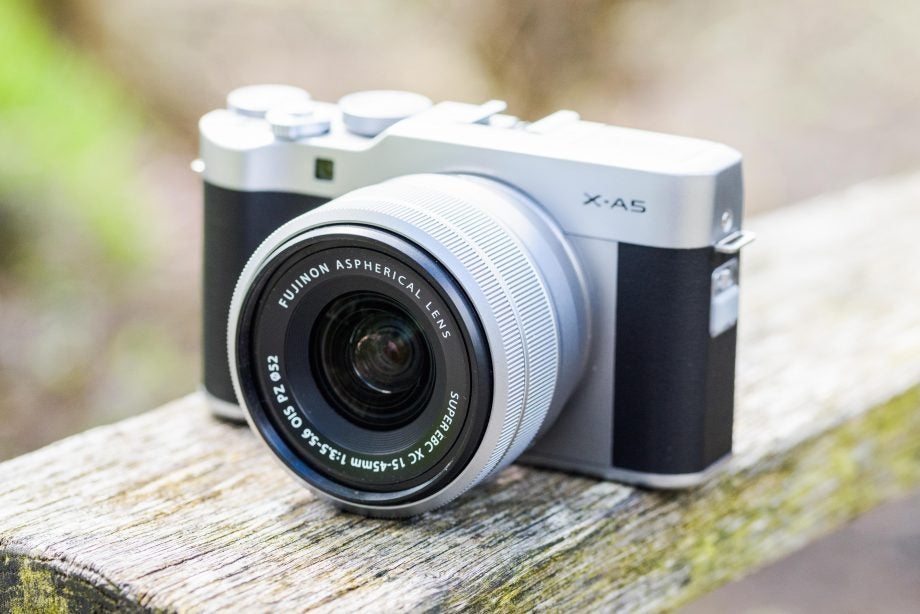
Verdict
Pros
- Great image quality
- Generously featured for the price
- Stylish and easy to use
- Good variety of film simulation modes
Cons
- No electronic viewfinder
- 4K video quality is underwhelming
- Kit zoom is fiddly and feels plasticky
- Some settings/features are buried within the menu
Key Specifications
- Review Price: £529 (with 15-45mm kit lens)
- 24.2MP APS-C CMOS
- ISO 200-12,800 (100-51,200 expanded)
- 6fps continuous shooting
- 3in, 1.04million-dot tiltable LCD touchscreen
- 361g (with battery and card)
What is the Fujifilm X-A5?
The Fujifilm X-A5 succeeds the Fujifilm X-A3 that was released towards the end of 2016 as the entry point to Fujifilm’s X-series mirrorless range. It’s primarily designed to appeal to vloggers and casual photographers looking to take their first step up from the camera that’s on their smartphone.
As you’d expect from an entry-level mirrorless model looking to entice photographers to a new system, the Fujifilm X-A5 is a compact and stylish mirrorless camera that’s generously featured yet easy to use.
Related: Best Mirrorless Cameras
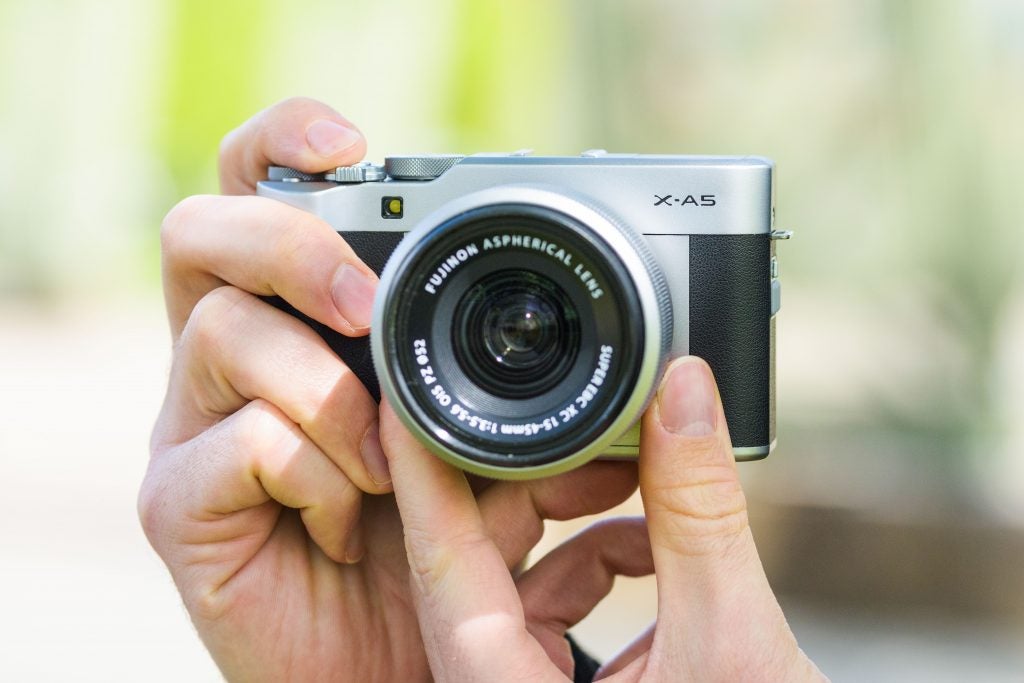
Fujifilm X-A5 – Features
The X-A5 is built around a newly developed 24.2MP APS-C CMOS sensor that, as with the X-A3 before it, employs the traditional Bayer colour pixel array rather than the proprietary X-Trans pixel array found inside more advanced Fujifilm mirrorless cameras higher up the range. The main difference between the X-A5’s sensor and the otherwise similar 24.2MP chip fitted to the X-A3 is that the new sensor benefits from the addition of phase-detection technology.
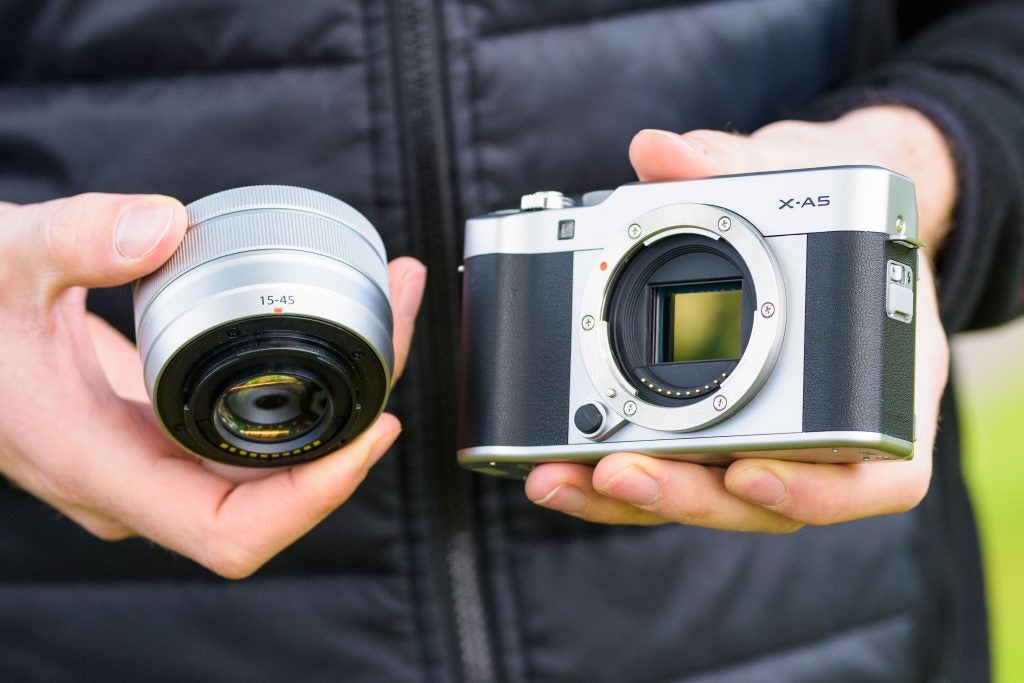
The X-A5’s also benefits from a “newly developed image processing engine” and although Fujifilm hasn’t given it an actual name, it’s most likely to be an enhanced version of what was found inside the X-A3. Either way, Fujifilm claims that the new processor is 1.5x faster than its predecessor.
While the X-A5’s hybrid autofocus system isn’t quite as advanced as those found on more expensive Fujifilm cameras, such as the X-T20 and X-E3, it’s certainly a step up from the X-A3. The new system employs a total of 91 AF points arranged in a 13 x 7 rectangular grid, including a central block of 35 phase-detection points.
By way of comparison, the X-A3 provides 77 AF points, all of which are of the contrast-detect variety. You can select from single-point AF, zone AF (utilising blocks of 9, 15, or 63 points), plus a wide AF mode that employs all 91 points and which can be used to track moving subjects. Focus modes, meanwhile, extend to AF-S, AF-C and Manual focus, with additional Face/Eye priority options for easy portraiture.
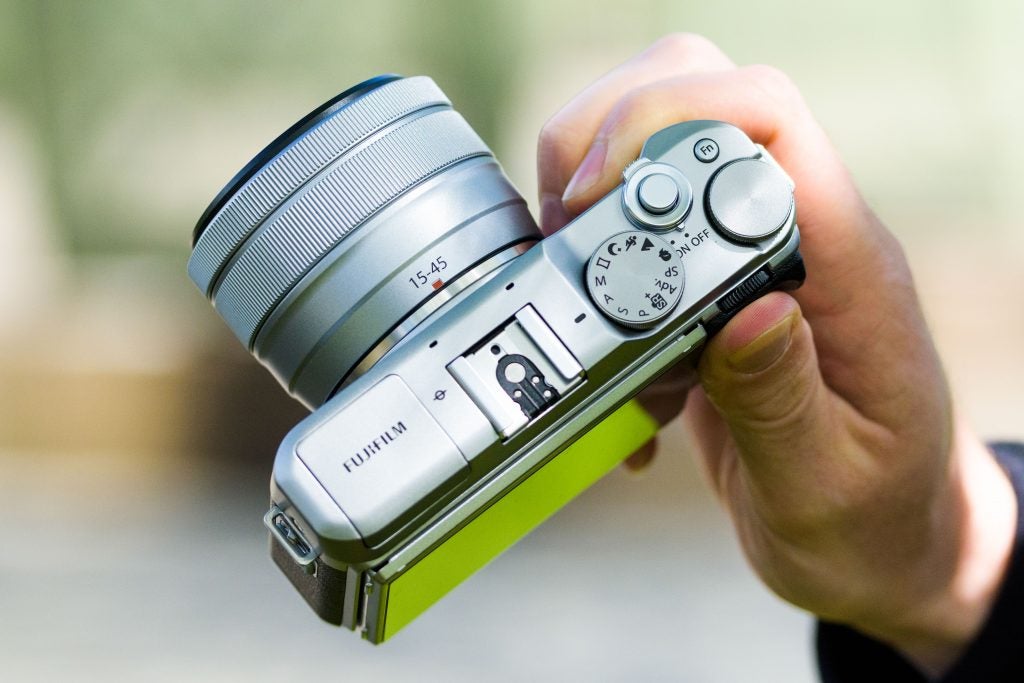
The X-A5 is also the first entry-level Fujifilm mirrorless camera to offer 4K video capture, although with a maximum frame rate of just 15fps overall quality is somewhat compromised – especially when the X-A5 is quickly panned or faced with fast-moving subjects. The maximum 4K recording time of five minutes is a bit disappointing too.
Switching to 1080p Full HD or 720p HD capture, the frame rate rises to a much more respectable 60fps, backed up by 50fps and 24fps options. A selection of high-speed capture modes are also available, including the ability to shoot 120fps at 1080p Full HD.
The X-A5 also gains a 3.5mm input which can be used to attach an external microphone. Should you want to use one for video blogging purposes then you’ll almost certainly need to invest in a side-mounting bracket as positioning a microphone directly on the hotshoe will most likely compromise the front-facing abilities of the rear display.
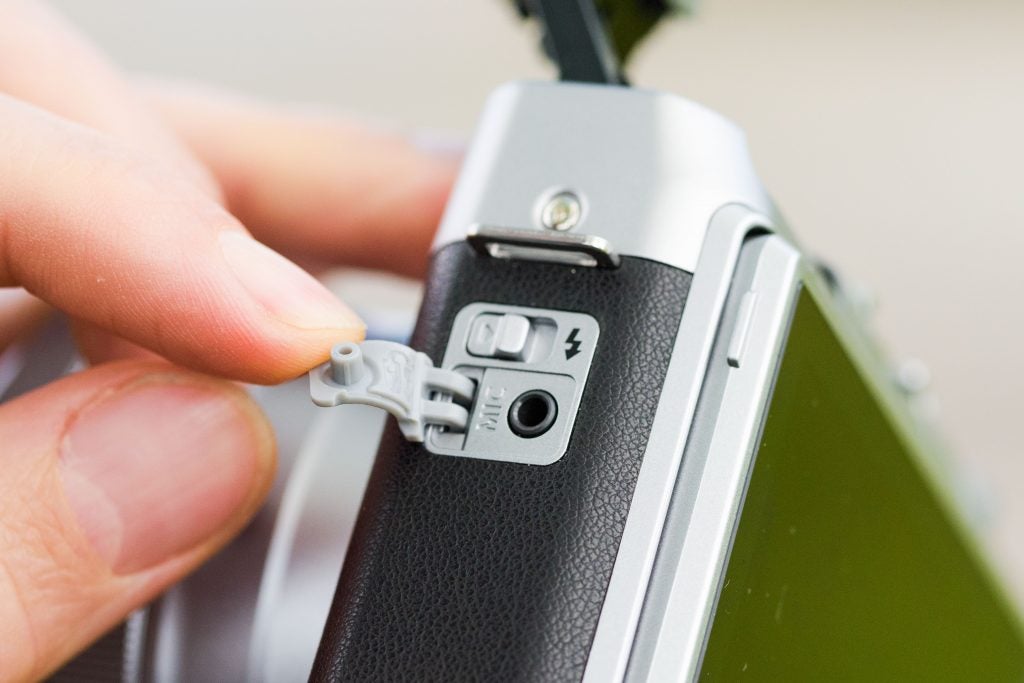
Exposure modes include the standard quartet of Program, Aperture-priority, Shutter-priority and Manual modes (PASM), along with a fully automatic Advanced Scene Recognition mode whose accuracy Fujifilm claims has been improved over the X-A3. These are backed up by 18 individual Advanced Filter effects and 10 individual Scene modes – a number of which (Portrait, Landscape, Sport and Night) get their own dedicated position on the exposure mode dial.
In addition to built-in Wi-Fi, the X-A5 also features low-power Bluetooth connectivity that makes light work of connecting previously paired smartphones. The required Fujifilm Camera Remote app is free to iOS and Android users.
Fujifilm X-A5 – Build and handling
The sleek design associated with Fujifilm X-series cameras has long been a major selling point of the range, and the X-A3 is no exception. While there’s plenty of retro-rangefinder charm about the X-A5 there’s also something undeniably sleek and modern about it too.
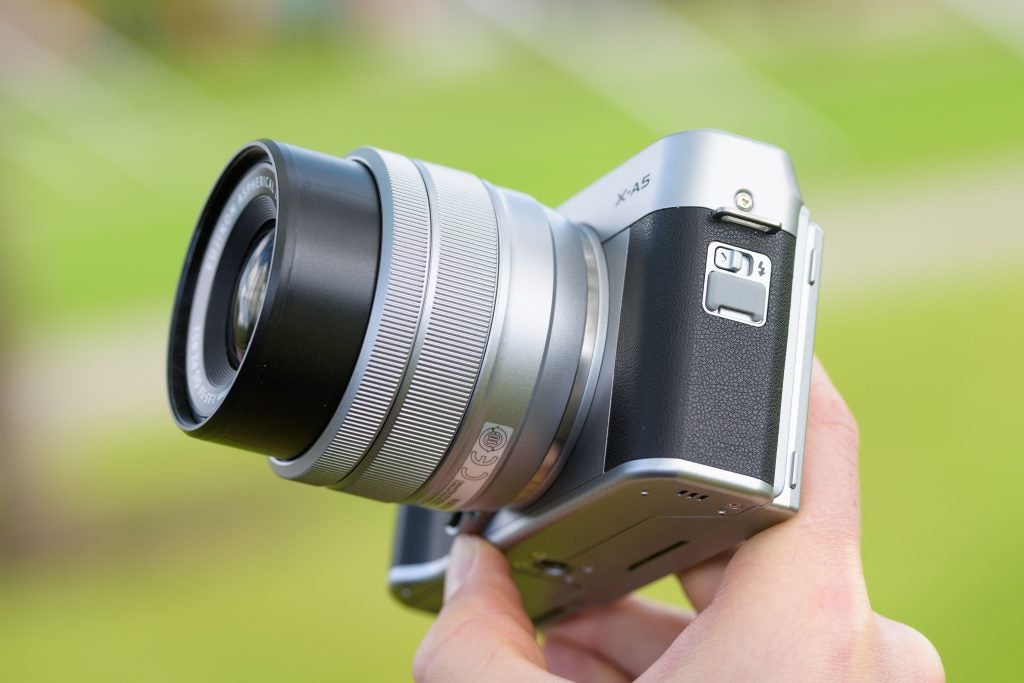
Although it isn’t weather sealed the polycarbonate body certainly feels on par for a camera at this price point and has a surprisingly weighty feel to it. The moulded handgrip is fairly shallow but does allow you to get a good grip when combined with the rear thumb rest.
Befitting its positioning as an entry-level model, physical dials and buttons have been scaled back and there’s only one Function button to assign as you see fit. The d-pad provides direct access to autofocus, white balance, drive mode and self-timer settings while the ‘Q’ button on the back of the camera brings up a quick menu on the rear display that provides access to a range of commonly used settings.
Fujifilm X-A5 – Screen
The X-A5 is fitted with a 3-inch, 1.04million-dot tiltable LCD touchscreen display that can be positioned upwards by 180 degrees, at which point the screen automatically rotates for easy self-portraits.
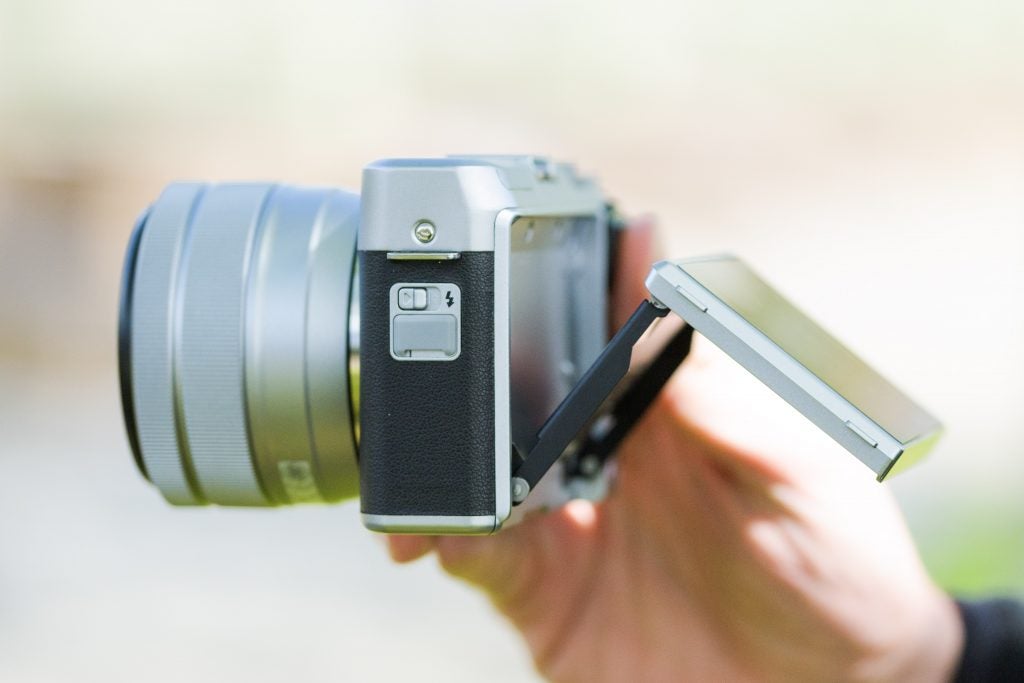
The display also provides some limited touchscreen functionality that allows you to select the active AF point or put the camera into Touch Shot mode whereby the camera focuses on your chosen spot and then automatically releases the shutter. The touchscreen can also be used to switch between AF-S, AF-C and Manual focus, although this does come at the expense of the manual selector dial found on the front of the X-A3, which has been removed from the X-A5 altogether.
In addition, the touchscreen can also be used to select the desired Film Simulation effect while the camera is being used in any of the ‘PASM’ or SR+ exposure modes, and also to switch between the various digital filter effects or scene positions while the camera is set to those particular exposure modes.
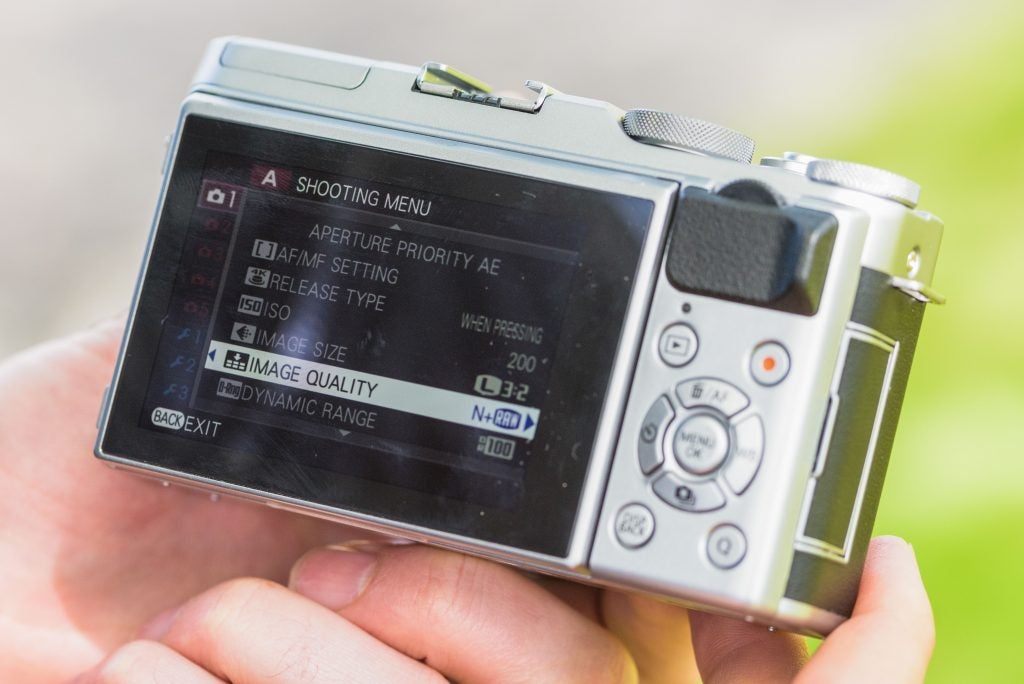
In Playback mode, meanwhile, you can use the touchscreen to swipe between images and enlarge them with a pinch gesture. For anything else you’ll need to use the in-camera menu though.
Fujifilm X-A5 – Performance
General performance is pretty good, with the camera taking just over two seconds to start-up and be ready to shoot. With the camera set to its maximum 6fps burst speed, we were able to shoot JPEGs continuously for around four or five seconds (24-30 images) without any noticeable slow down, although in Raw capture this dropped to approximately six consecutive frames.

Fujifilm XC 15-45mm f/3.5-5.6 OIS PZ, 1/30sec at f/6.4, ISO 800
The addition of on-sensor phase detection has noticeably improved the X-A5’s focusing abilities too, with the camera providing snappy and accurate focus-lock in all but the dimmest conditions.
Whereas the X-A3 came bundled with a manually operated 16-50mm kit zoom the X-A5 comes with Fuji’s new XC 15-45mm f/3.5-5.6 OIS PZ power-assisted zoom. This is the company’s first motorised zoom designed for the X-mount system and comes with built-in Optical Image Stabilisation technology.

Fujifilm XC 15-45mm f/3.5-5.6 OIS PZ, 1/70sec at f/4.5, ISO 800
The lens is operated via two control rings: an inner one that operates the zoom in power-assisted mode, and an outer ring that either acts as a manual zoom control that alters the focal length in minute increments, or as a manual focus ring depending on what AF mode the camera is set to.
While the XC 15-45mm’s compact size is undoubtedly a great match for the X-A5’s diminutive body, it does feel rather plasticky, right down to the plastic lens mount. We also found that it’s motorised nature tended to slow us down a bit. This is primarily because finding exactly the right focal length for your composition can be a fiddly two-step process that requires the use of both rings.

Fujifilm XC 15-45mm f/3.5-5.6 OIS PZ, 1/20sec at f/7.1, ISO 800
In addition, it’s also quite noisy – something the X-A5’s twin stereo microphones will certainly pick up during video capture. On the plus side though the XC 15-45mm is impressively sharp – especially when used between f/4 and f/11 – and capable of resolving excellent levels of fine detail when paired with the X-A5’s 24.2MP sensor.
Metering is taken care of via a 256-zone module, with the option to select from Multi, Spot and Average metering patterns. On the whole this proves very accurate, although we did notice an occasional tendency for the X-A5 to produce results a little darker than we ideally wanted.

Fujifilm XC 15-45mm f/3.5-5.6 OIS PZ, 1/400sec at f/8, ISO 200
Colour reproduction is very good too, and while Fujifilm’s X-Trans sensor is arguably capable of delivering images with slightly more punch and immediacy, there really isn’t much to fault about the X-A5’s Bayer-array CMOS sensor.
Fujifilm X-A5 – Image quality
Fujifilm X-A5 – Resolution
The X-A5’s 24.2MP sensor delivers more than adequate detail and happily resolves 3,200l/ph at ISO 100. The level of detail drops to 3,000l/ph at ISO 800 and 2,800l/ph at ISO 6400, but this is a good result and on a par with what we’d expect. Detail reduces quite abruptly at ISO 25,600 and ISO 51,200.
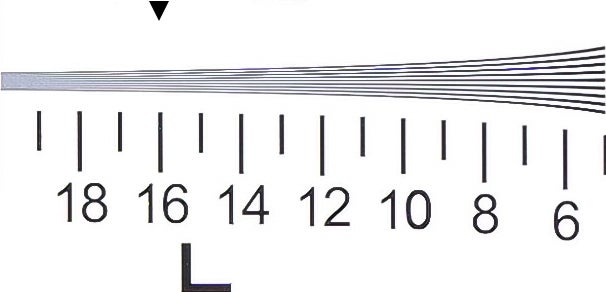
Fujifilm X-A5, resolution, JPEG ISO 100
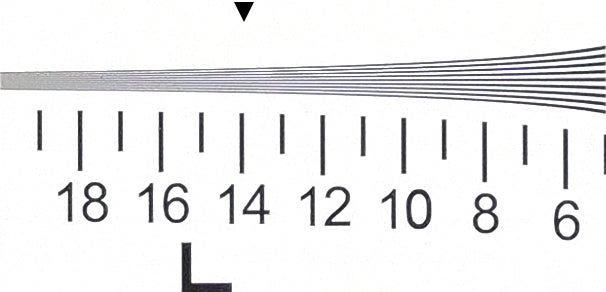
Fujifilm X-A5, resolution, JPEG ISO 6400
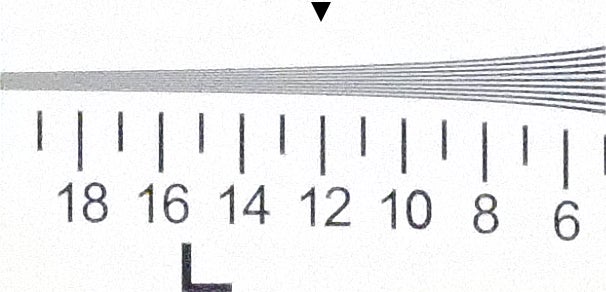
Fujifilm X-A5, resolution, JPEG ISO 51,200
Fujifilm X-A5 – ISO and noise
The X-A5’s in-camera JPEG processing provides excellent results between ISO 100 and ISO 1600, with only a trace of softening visible at ISO 1600 and even then only when the image is viewed at 100%. At ISO 3200 softening is more pronounced and becomes noticeable when viewing images at 50%, however images should remain usable at smaller sizes all the way up to ISO 6400 and even ISO 12,800 at a push. The top expanded settings of ISO 25,600 and ISO 51,200 display a marked loss of quality and are best avoided if at all possible.
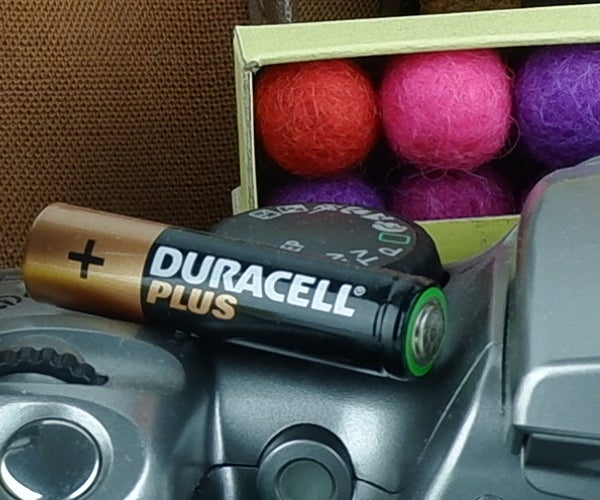
Fujifilm X-A5, noise, JPEG ISO 100
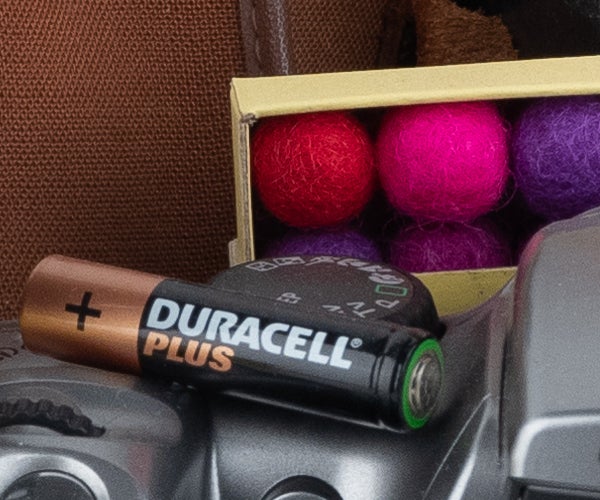
Fujifilm X-A5, noise, RAW ISO 400
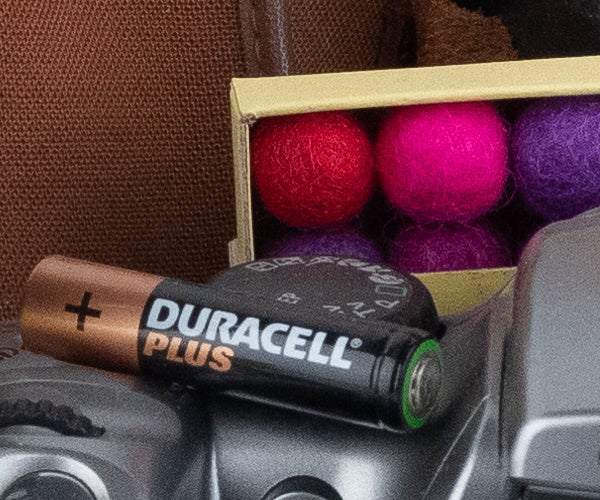
Fujifilm X-A5, noise, RAW ISO 1600
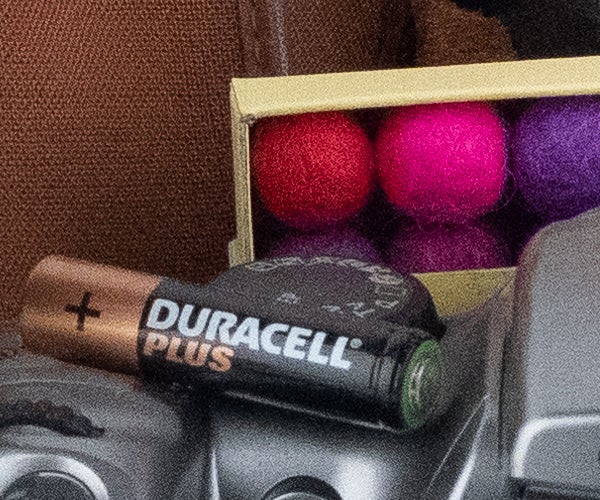
Fujifilm X-A5, noise, RAW ISO 6400

Fujifilm X-A5, noise, JPEG ISO 25600

Fujifilm X-A5, noise, JPEG ISO 51200
Why buy the Fujifilm X-A5?
On a recent family trip to London, I carried the X-A5 around with me and used it to document our break, making ample use of its fully automatic exposure modes as we fully expect most new owners initially will too. I found it to be an easy-to-use and relatively responsive little camera. For first-time mirrorless buyers it certainly ticks all the right boxes while providing a number of more advanced features that users can explore and experiment with once they feel a little bit more confident.
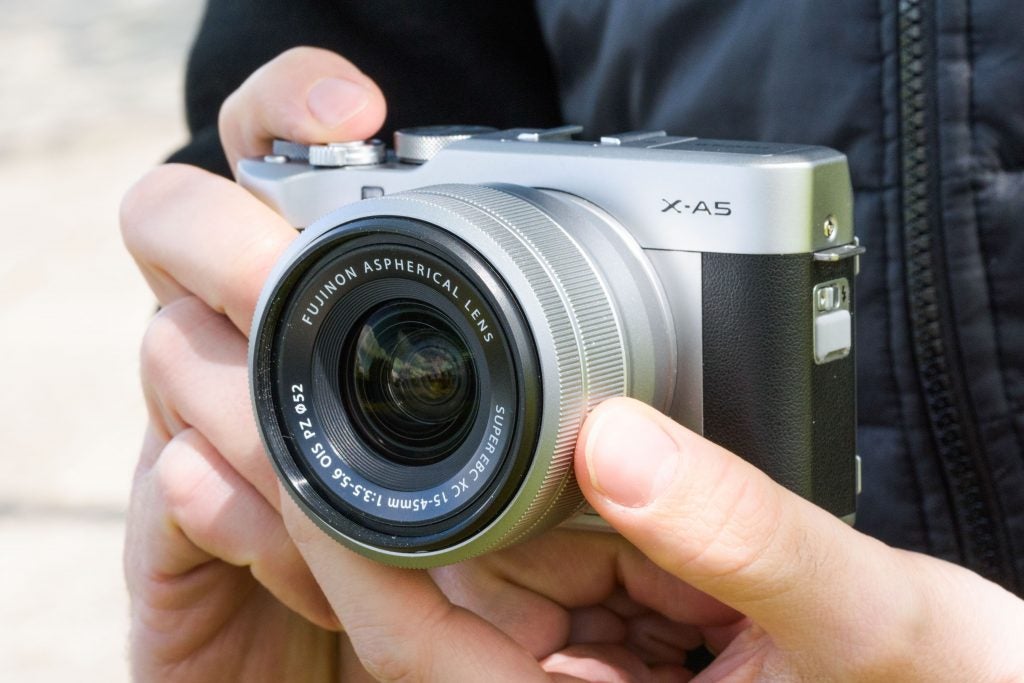
Given it’s positioning as an entry-level model, we suspect that many users will primarily shoot JPEGs with it, and in this respect the X-A5 can be relied upon to deliver consistently good image quality with vibrant yet accurate colour and impressive levels of sharpness and detail.
The addition of 4K video support, while welcome, is somewhat undermined by the maximum 15fps frame rate and five-minute time limit. Hopefully the next model in the line will boost 4K capture to 25fps, however if I was the owner of an X-A5 myself then I’d probably stick to 1080p Full HD capture, as it is noticeably smoother.
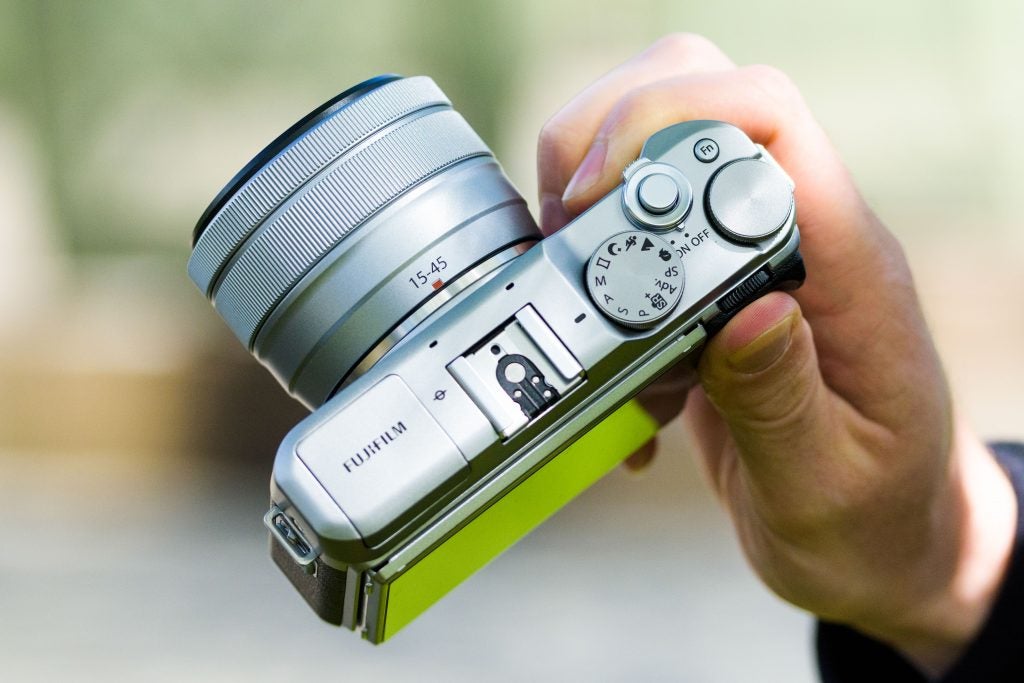
Lastly, while the new XC 15-45mm power-assisted lens is impressively sharp for a kit zoom, it’s motorised nature can be as much of a hindrance as a help when shooting stills. Other than that though, the X-A5 would make undoubtedly make a great investment for first-time mirrorless buyers.
Verdict
The Fujifilm X-A5 is an entry point into the company’s X-series lineup of mirrorless cameras. It’ll serve beginners well with good image quality, but does have some limitations and disadvantages that are worth taking on board before you buy it.
Trusted Score
Features
| Megapixels (Megapixel) | 24.2MP |
| Image Sensor | APS-C CMOS |
| Shutter speed | 30-1/4,000sec (4-1/32,000sec via electronic shutter) |
| Max output resolution | 6000 x 4000 pixels |
| Exposure metering | Multi, Spot, Average |
| Exposure compensation | +/-5EV in 1/3EV steps |
| ISO settings | ISO 200-12,800 (100-51,200 expanded) |
| LCD Monitor | 3in, 1.04million-dot tiltable LCD touchscreen |
| Viewfinder | None |
| Drive modes | 6fps continuous shooting |
| Image formats | JPEG, raw |
| Video (max res/format) | 4K (3840x2160), Full HD (1920x1080), HD (1080x720), |
| Memory card slot | SD, SDHC, SDXC (UHS-1 compliant) |
| Batteries supplied | NP-W126S Li-ion battery |
Physical Specifications
| Dimensions Width (Millimeter) | 116.9mm |
| Depth (Millimeter) | 40.4mm |
| Length (Millimeter) | 67.7mm |
| Weight (body only) (Kilogram) | 361g (with battery and card) |

